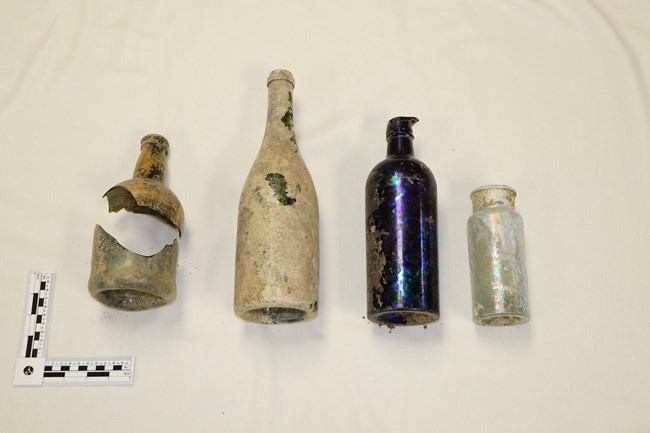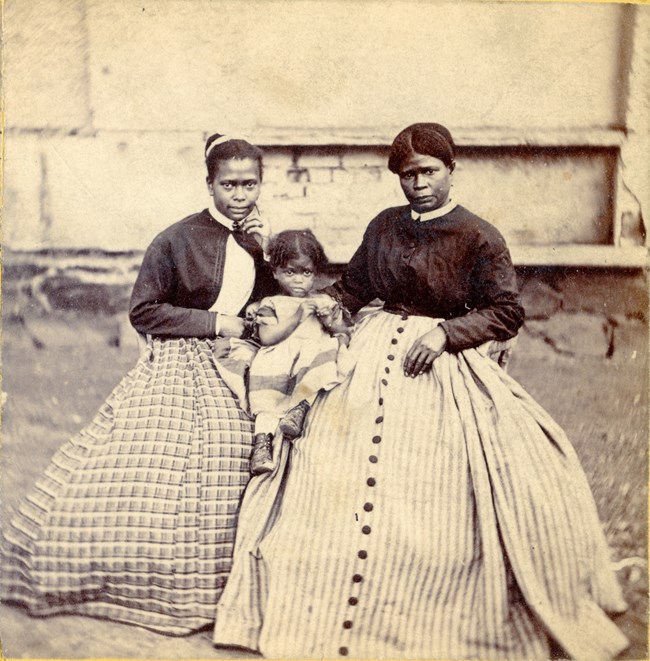
NPS Discovery of an Enslaved Family’s Subfloor Storage Pit and Religious/Magical Shrine at the South Slave Quarters of Arlington House 
NPS The archeological investigations identified a subfloor storage pit near the fireplace hearth. This pit had contained the bottles which were most likely associated with the enslaved family of Selina and Thornton Gray. They occupied the west room quarters in the mid-nineteenth century. Analysis of the findings determined that the pit functioned as a type of magical or religious shrine. It contained what likely was an enslaved peoples’ “spirit bundle” of artifacts. The four bottles were part of this bundle and likely “conjuring bottles.” The placement of a spirit bundle or conjure bottles as part of a religious or magical shrine could serve various purposes. They could ward off evil. They could promote self-preservation. They could cast spells to harm others. They could host protective Nkisi spirits or entrap malevolent entities. They could function as a talisman and act of defiance to combat the harsh and de-humanizing realities of slavery and to safeguard the future. |
Last updated: February 3, 2022
